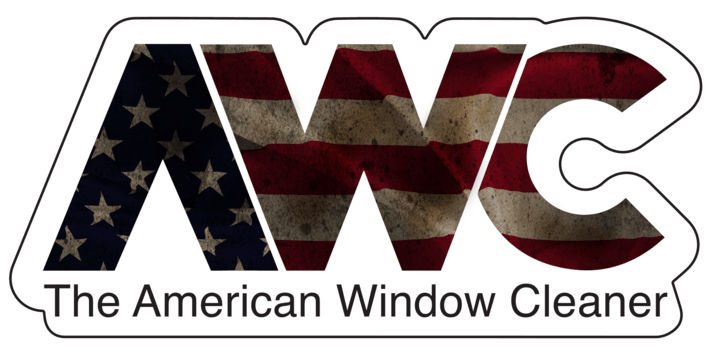Hey readers! Caleb here from PH7 Pure Water Systems Inc. Introducing you to our new recurring article, “the galileo effect!” The purpose is to educate, inform, and clear up common misconceptions within our industry. I’m trying to help every window cleaner make decisions based on facts and scientific evidence! No specific systems or products will be pushed or mentioned, as this article is not designed to be an advertisement. Welcome to THE GALILEO EFFECT!
Episode 1: RO’s and Pumps!
RO’s: Reverse osmosis filters are not designed for window cleaning, period. We use them in the worst possible way for how an RO filter is designed to be used. So we have to acknowledge this and accept that way of thinking. This is a simple fact. RO’s are designed to run at high pressures continuously for efficiency. This is why we ALWAYS recommend using a pump with any RO system. Why is this important, and how does it benefit you? The closer we can run the RO to the manufacturer’s specifications, the better the RO will perform and the longer it will last. Not to mention making more water and not limiting yourself to tap pressure. The better the RO performs, the more cost-effective it is to run. Running within this sweet spot allows your RO to do even more of the work. Sometimes letting you work without DI, or at the very least, sending much lower TDS to your DI. What does that mean? Your DI will last longer, also saving you money. So when picking out your membrane, you want to pay attention to a couple of numbers. The specified pressure ratings for our industry you want to go for are the ultra-low-pressure membranes, typically rated for 60-80 PSI. This is important because higher-rated membranes will not be able to produce the volume we need.
Another important thing is your rejection rate, which tells you the percentage of the minerals the membrane will be able to filter out. A good rating is typically close to 98%. The higher this number is, the longer your DI will last because the RO will do most of the heavy lifting.
Another point to make would be the use of hot water, as it is becoming more and more popular for cleaning. The RO will have a max temperature rating typically around 110 degrees Farenheight. If using hot water, it is important to keep the temperature below these ratings to avoid damaging your filter. Your system will produce more with warmer water as long as you don’t exceed the temperature rating.
Pumps: Available pumps typically used for RO filters can vary in price drastically. The three main types are 12V diaphragm booster pumps, vane pumps, and centrifugal pumps.
First, we will analyze the diaphragm pump. The main thing is that they are 12V in most cases. This means you are dependent on a battery as a power source. This can be both a positive and a negative, pun intended. The positive side is that you don’t need to hook up to a power outlet. You can use a battery bank or even wire your vehicle’s battery directly. The downside is having to charge them; in our experience, they tend to wear out more quickly. That being said, they still have an important place. The most practical application for this pump style is for a static tank setup.
Next, let’s talk about vane pumps. These are commonly used on many pure water systems in our industry. It’s a mechanical pump, meaning there are mechanical parts rubbing metal on metal, creating a lot of friction inside the pump. They typically run on 110V. A vane pump’s main benefit is its ability to produce high pressure within the RO. This can be very beneficial for making a good amount of pure water. The downsides? One, they are expensive. Two, although they produce well on the high-pressure side, being a mechanical pump means it limits water flow. Whatever the specification is, that’s it. So what does this mean? When it comes to flushing the RO, if your vane pump only pushes, let’s say, 2.5 gallons a minute, that’s all you’re going to get. (Flushing is vital for maintaining your RO) This means you will have to flush your RO longer after each use, consuming valuable time. Another downside is that as they start to wear out, metal or metal filings can push through to the RO, as well as the chance for mechanical failure.
Lastly, let’s talk about centrifugal pumps. A centrifugal pump operates through the transfer of rotational energy from one or more driven rotors, called impellers. The action of the impeller increases the water’s velocity and pressure and directs it towards the pump outlet. One of the benefits is that they are capable of much higher water flow (GPM). We can take advantage of this when flushing the RO membrane. (Flushing is vital for maintaining your RO) Another benefit is that these pumps can still create enough pressure to be within optimal range, according to RO manufacturer’s specifications. The downside is that you may be limited in how much pressure you can create based on the water source. The biggest selling point for centrifugal pumps is the price point, which is much cheaper than its counterpart and has excellent longevity. We tend to lean towards these pumps simply for being affordable, durable, and great for maintaining your RO.
Get a pump, no matter the route or RO system you have! Better flow, performance, and longevity for the most expensive filter on your system. Get online and grab yourself one; it will only benefit you in the long run! Time is money. Let’s get to work!

Recent Comments